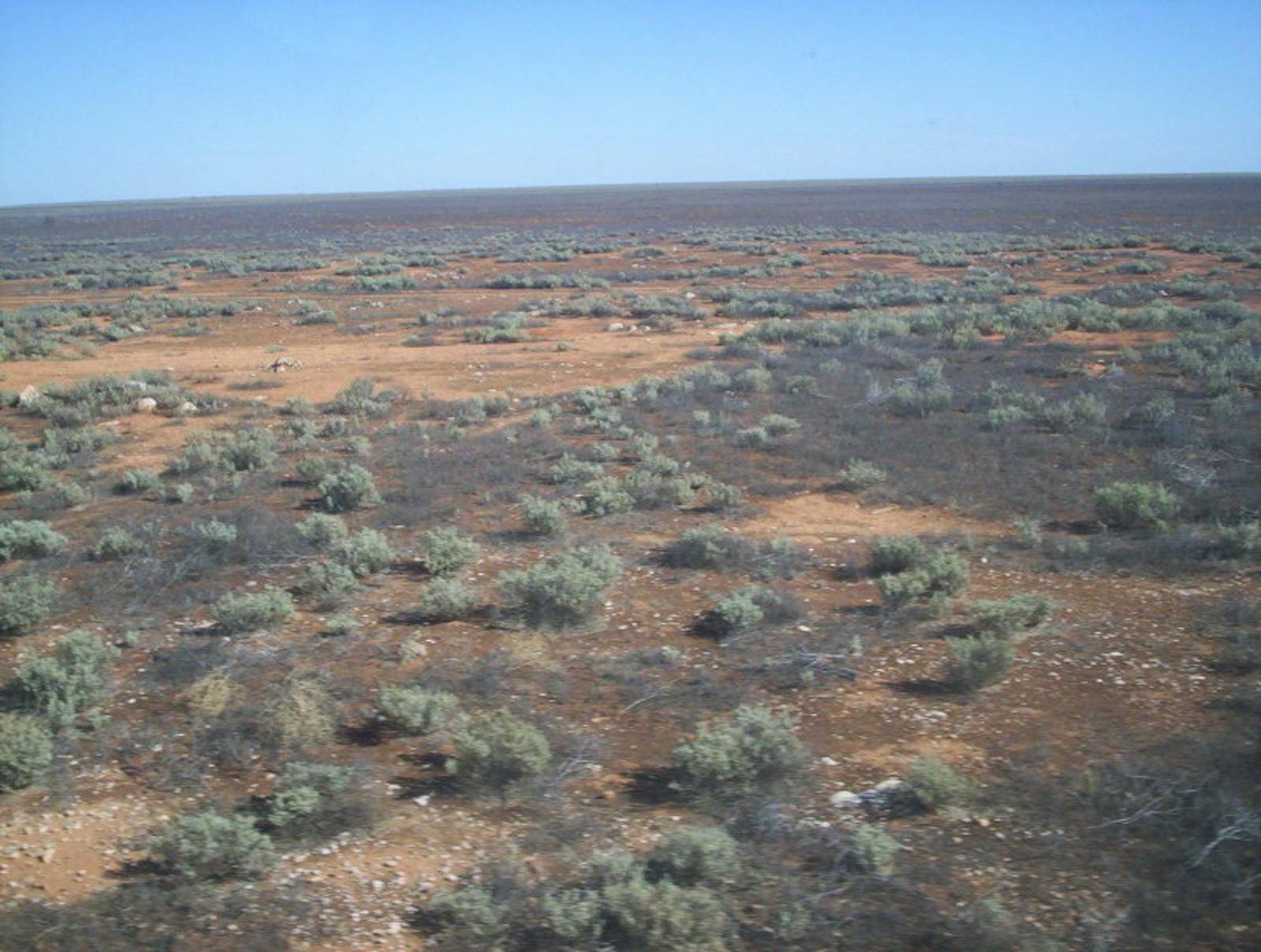Nullarbor Plains Xeric Shrublands
The ecoregion’s land area is provided in units of 1,000 hectares. The conservation target is the Global Safety Net (GSN1) area for the given ecoregion. The protection level indicates the percentage of the GSN goal that is currently protected on a scale of 0-10. N/A means data is not available at this time.
Bioregion: Greater Australian Interior Desert & Shrublands (AU7)
Realm: Australasia
Ecoregion Size (1000 ha):
19,786
Ecoregion ID:
212
Conservation Target:
83%
Protection Level:
4
States: Australia
The Nullarbor Plain is flat, featureless, and treeless, riddled with caves and sinkholes in this uplifted ancient seabed—the world’s largest limestone plain. The caves are home to many communities of invertebrates and Chocolate wattled bats (Chalinolobus morio), all adapted to dark recesses and underground rivers; many of them are endemic and found nowhere else. Above ground on the hot surface, one can find red kangaroo, dingo, and southern hairy-nosed wombat living in this tough environment with no known permanent surface water sources.
.jpg)
The flagship species of the Nullarbor Plains Xeric Shrublands ecoregion is the chocolate wattled bat. Image credit: Courtesy of Vespadelus, iNaturalist
Saltbush and bluebush chenopod shrubland dominate the landscape of Nullarbor Plains xeric shrublands. Some mulga woodlands occur on the western fringes and dune habitats occur in the north grading into the Great Victoria Desert. Roughly 630 plant species have been recorded in the ecoregion, including several endemics like the Nullarbor emu bush. An endemic subspecies of the Australian masked owl roosts in the sinkholes. Nullarbor quail-thrush, white-winged fairy wren, and the spectacular Naretha blue bonnet parrot occur here.
The critically endangered plains-wanderer is an evolutionarily distinct, quail-like ground bird: it is the only species in the family Pedionomidae, somewhat related to shorebirds, yet it lives in habitats that are hundreds of kilometers away from major shores. The endemic Nullarbor bearded dragon has a modest neck frill and coloration that blends well with the Plain’s surface.
Much of the Plains remains relatively intact, though roughly 32% is commercially grazed by sheep whose close-cropping of vegetation significantly alters habitats and disrupts soil horizons. Feral camels, horses, and introduced rabbits also degrade natural habitats. Invasive foxes, feral cats and dogs, and starlings prey on native wildlife and invertebrates. Increased fires caused largely by human ignitions have significantly impacted natural vegetation over large areas.
-CC-2008.jpg)
Female red kangaroo. Image credit: Creative Commons
Overgrazing also facilitates the spread of invasive weeds, such as African boxthorn, African love grass, Bathurst burr, salvation Jane, and wild mignonette, which degrade natural vegetation. Protected areas include Nullarbor National Park/ Wilderness Protection Area, Yellabinna Regional Reserve, Yumbarra Conservation Reserve, Wahgunyah Conservation Reserve, and the Mamungari Conservation Park.
The priority conservation actions for the next decade are to: 1) effectively control non-native predator and herbivore within protected areas; 2) maintain natural fire regimes within protected areas; and 3) expand and better connect the protected area network to include more transition areas between the Plains, mulga woodlands, and dune fields.
Citations
- Australian Government. 2008. Nullarbor Bioregion. Accessed on 1 June 2019 at https://www.environment.gov.au/system/files/resources/a8015c25-4aa2-4833-ad9c-e98d09e2ab52/files/bioregion-nullarbor.pdf
- McKenzie NL, AC Robinson (eds). 1987. A biological survey of the Nullarbor Region South and Western Australia. South Australia Department of Environment and Planning, Adelaide. https://library.dbca.wa.gov.au/static/FullTextFiles/002809.pdf
- Ryan K, B Page, R Brandle, J Jay, H Ehmann, D Armstrong. 2012. Trends in the biodiversity of the Nullarbor region: a comparison between 1984 and 2012. Government of South Australia, Adelaide.



